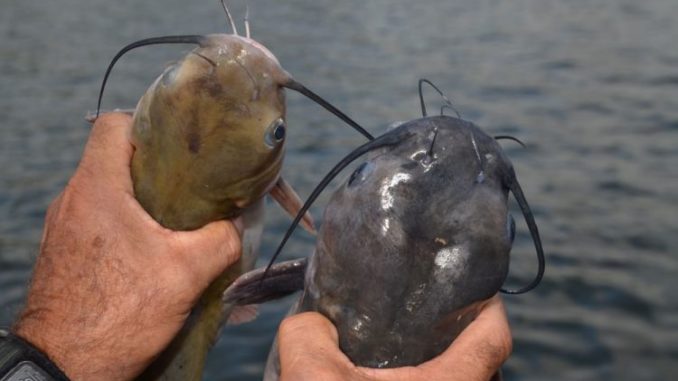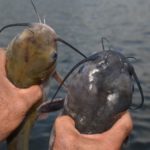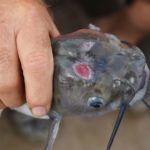
Six catchable sized catfish species occur in Louisiana waters. They can be divided into two groups: bullheads and true catfish.
The three species of catfishes, channel, blue and flathead, are of most interest to fishermen. All three share the characteristic of requiring some sort of cavity in which to spawn.
Natural cavities, those not provided by man’s debris, include hollow logs and holes excavated by the fish themselves under stumps and logs, or in steep, cut banks.
So obligated are these three species to spawning in cavities, that if they are stocked in a pond with gently sloping banks and no woody debris, they will live out their entire lives without spawning once.
The channel catfish is the most studied of the three, although the other two species share similar spawning behavior.
Sometime in late March or April, male channel catfish develop grotesquely swollen heads with large muscular knots behind their eyes, and thickened lips. In April, the males also begin to search for natural or man-made cavities to use as a spawning site.
Once a male claims a site, he will defend it against other males and will scour the cavity clean. He will use his jaws so vigorously in cleaning a metal container, such as a bottle or can, that he will rub the skin off the top of his head, creating open sores.
Beginning in May, ripe females will enter a male’s cavity in search of mates. After several days of courtship, followed by spawning, the female will leave the cavity and her eggs in care of the male, who will fan them with fresh water with his fins and guard them against egg thieves.
Shortly after the eggs hatch, the young catfish leave the nest and the male immediately begins to prepare the cavity for the next willing female. The process occurs over and over again until early September, when the exhausted male finally quits his nest.
During this five-month period, the male feeds very little, if at all, metabolizing the muscle of its body. By September, most males are shrunken ghosts of what they were in April, and what flesh is left in their bodies is soft and mushy.
Males will use almost any available cavity for spawning. Besides refrigerant bottles, Jeremy Gremillion has heard of fishermen using metal buckets, auto tires and PVC pipes.
“For PVC pipes, the fishermen heat one end of a 4- to 6-inch diameter pipe, smash it flat and let it cool. Then, near the open end they drill a hole to which to tie a rope.”
When a male fish is removed from a bottle by fishermen, another will quickly occupy the prime real estate, meaning bottles can be run at least twice a week.
Neither of the men feels that removing spawning fish by fishing bottles harms catfish populations. The spawning season lasts longer than does the period during which they run their bottles, and the un-run bottles provide valuable nesting space for the fish.
Like most bottle fishermen, they leave their bottles in place year-round to keep them seasoned.




